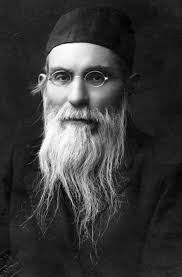By Rabbi Yair Hoffman for 5TJT.com
The Slabodka Yeshiva is called the “Mother of Yeshivos” for a reason. In the United States, the heads and founders of most of the early Yeshivos in this country were trained by Rav Nosson Tzvi Finkel (better known as the Alter) and his students. Yeshivas Torah VaDaas, Chaim Berlin, Lakewood’s BMG, Chofetz Chaim, Ner Yisroel, Beis Medrash Elyon, Mir – all were headed or founded by students of Slabodka or students of these students. The same is true for many of the Yeshivos in Eretz Yisroel – these Yeshivos are daughters or grand-daughters of the mother Yeshiva – Slabodka.
But why did the Slabodka Yeshiva originally move to Hevron in 1924 in the first place?
Certainly, it must have been a costly endeavor. Just one person moving to British controlled Eretz Yisroel from Europe is expensive – moving 200 students all the way to Eretz Yisroel is nearly insurmountable – aside from all of the work required to obtain exit and entry visas too. Why did they do it?
The opinions are rather divided. Some seforim claim that it was the Bolsheviks. Other writers claim that it was to address Eretz Yisroel oriented tendencies among the student body. Some others claim that it was the fulfillment of a life-long dream of the Alter.
All of these answers, however, although perhaps partially true, ignore the actual history of what was transpiring at the time – and that was the first World War and its aftermath, and the emergence of the short-lived Republic of Lithuania (1918-1940).
When World War One began, most of the Yeshivos relocated and or split up – including the bochurim had to leave. The last one out of Slabodka in 1914 was Rav Eliezer Menachem Shach. The Alter did not come back to Slabodka until 1920.
By that time, there were enormous changes. The town of Kovno switched from old-style Lita to German Orthodoxy – Torah im Derech Eretz. Imagine Bnei Brak chadarim becoming, RaMaZ – as an example. And, oh yes, Slabodka and Kovno are no longer under Russia, but under the New Republic of Lithuania.
Boruch Hashem for Slabodka, it was considered a school of higher learning because Rav Avrohom Grozinsky had made such an arrangement. But not for long.
Soon a crisis emerged.
As soon as the new Poland began chomping upon its borders, Lithuania needed to institute a draft. They gave the Yeshiva an ultimatum: Either allow the older students to be drafter in the Lithuanian Armed Forces, or start introducing secular studies into the program.
The hanhallah thought hard and decided to split into two. The younger students – below draft age would stay in Slabodka. The older ones would have to go to Eretz Yisroel.
The Alter sent Rav Avrohom Grodzinsky and Rav Yechezkel Sarna to scope out the situation in Eretz Yisroel. At first, prior to the crisis, the plan was just to send ten students to Yerushalayim. They were to adopt Yerushalmi garb and blend in. Now, however, after the Lithuanian Draft Crisis – they needed to find a different location and move to it – en masse. They chose Hevron. After the return to Europe, it was decided that Rav Yitzchok Isaac Sher and Rav Avrohom Grodzinsky would head the Yeshiva in Slabodka. The Alter and his son Rav Moshe Finkel would be in Eretz Yisroel.
Money was raised. Exit visas were obtained and entrance visas to Erets Yisroel. It took herculean efforts contacting all sorts of people.
In Hevron two tragedies were to strike. Rav Moshe Finkel zt”l, the Alter’s son, died in an illness shortly after his arrival. And then came the horrible, ugly, massacre in 1929. The Alter, however, had passed away two years earlier – saving him the horrible sight of the unprovoked horrific murders.
The author can be reached at yairhoffman2@gmail.com












2 Responses
Today is the third of I’yar, the 40th yahrzeit of Rav Breuer ztvk”l. I highly doubt he would agree with your characterization of “German orthodoxy – Torah im Derech Eretz” as “becoming RaMaZ.” I was horrified. Your lack of understanding of the Shita is evident. I believe you owe the Kehlilla an apology.
Thank you for sharing this important chapter in Hebron’s history. For more details and photos check out our article on the Slabodka yeshiva here: http://en.hebron.org.il/history/671